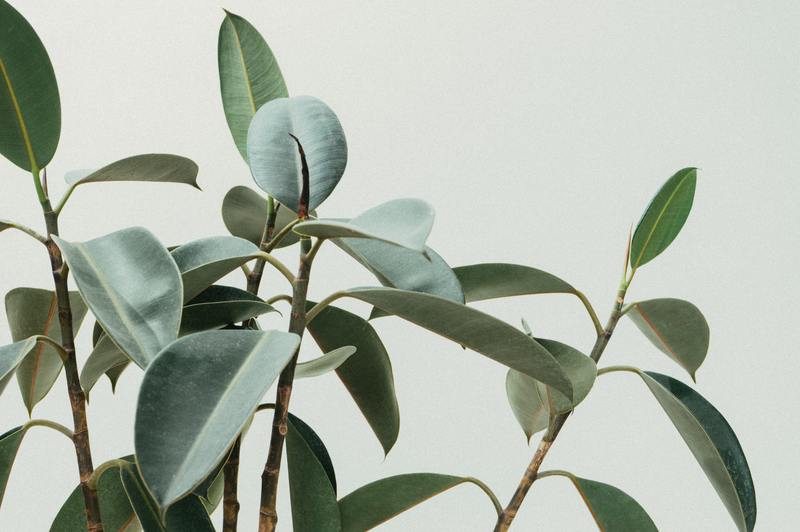The answer to the question, “what causes white mold on plants?” is quite complicated. The short answer is that certain conditions lead to mold growth.
Read more about the conditions that cause white mold to grow on plants below!

What Is White Mold?
White mold is not a specific strain of mold. Three species count as white mold, and they are Aspergillus, Cladosporium, and Penicillium.
Also, mold takes on the color white when they are still in the early stages of development. Later on, they change color after producing more mold spores.
When they produce more mold spores, best expect the mold to grow into a colony soon. Here’s an article that may help in eradicating mold spores to prevent further mold growth.
Why Does White Mold Grow On Plants?
White mold growth is usually harmless. The development is due to a saprophytic fungus that feeds on decomposing organic matter.
Its growth is a symptom of something wrong with your plant, especially if it looks sick beyond the white mold growth. Besides that, here are some of the causes of white mold growth:
1. Poor lighting
Mold thrives in dark and damp environments; hence, little sunlight would invite mold spores to settle on your plants. Not to mention that your plants also have moisture and food for them to grow.
Moreover, it is unhealthy for plants to go without sufficient sunlight. With poor lighting conditions, you are inviting mold and making your plant sick.
2. Moisture
Indoor plants have unregulated air around them. That means that mold spores are more likely to settle on the damp soil and grow from there.
Moisture and lack of ventilation go together when it comes to mold growth on indoor plants.
3. Lack of ventilation
As mentioned above, poor air circulation inside your homes causes the top of your soil to stay damp. Contrary to outdoor plants, who get a natural breeze that dries the top of the plant’s soil.
Are white molds on plants dangerous?
White mold occurs naturally, but it can give your plants diseases. It affects the plants’ leaves, weakening them and turning them yellow.
Before you know it, the mold-contaminated plant will wilt and die. Moreover, mold is incredibly contagious and will likely affect the adjacent plants.
If left uncontrolled, it may affect the structures inside your home as well. Furthermore, mold has adverse health effects on humans, so it may result in allergies among your vulnerable family members.
Ways of removing white mold on plants
We’ll share three ways to remove white mold from plants.
1. Manually remove the mold
The first way to get rid of white mold is to remove it manually. Re-pot your mold-contaminated plant.
Naturally, you have to use new potting soil. Along with repotting your plant, you have to ensure that the conditions for mold growth have been dealt with.
2. Baking soda spray
Fill an empty spray bottle with baking soda mixture. To make the baking soda mixture, combine a liter of water and two teaspoons of baking soda.
Afterward, spray it on the mold-contaminated part of the plant. The baking soda’s pH level will wipe out the mold.
3. Cinnamon
Cinnamon can be used to eradicate white mold on your plants, too! The chemical compound Cinnamaldehyde of cinnamon is anti-fungal; that’s why it can be used to kill off mold.
Sprinkle cinnamon on the soil’s surface until you have a light layer on top of it. Leave the cinnamon layer there and let it do its magic.
Tips to prevent white mold growth on plants
Like with everything else, mold prevention is better than dealing with mold growth itself. Here are some ways you can prevent white mold growth on your plants:
Water appropriately
Overwatering invites mold growth. Meanwhile, underwatering may ruin your plants because they do not get enough nourishment.
To avoid haphazard watering, check your plant’s soil before watering. To check, poke the ground and see if the water is damp.
If it is damp, it does not require any more water. If the topsoil is dry, then feel free to water your plant.
Bottom feeding
Setting a bowl of water underneath the plants will keep its top surface dry, which would prevent mold growth in that area. Bottom feeding is also better for plants because it inspires deep root growth.
Clean the topsoil
Since mold feeds on decomposing organic matter, you have to remove leaves on the soil to prevent mold growth. Eliminating debris and dead leaves is especially important among large and bushy plants.
For a more large-scale mold prevention, here is an article on keeping your greenhouse mold-free.
Conclusion
Now that you understand what causes white mold on plants, we hope you take into heart the ways to prevent them as well. Despite being a tedious process, it’s all worth it in the end.
Even if you encounter white mold growth, we’ve got you covered! Just read the part of the article and choose among the three ways to remove white mold on plants.
